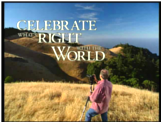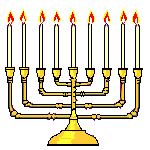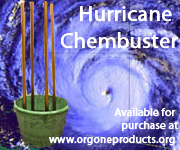A post submitted by CGI member Dave68.
*****************************
msn.com- According to historian Arnold Toynbee, ĎGreat civilizations are not murdered, they take their own lives.í In some regards a civilization is often responsible for its own decline. However, the self-destruction is usually assisted by multiple factors. The nature of the societal collapse and your individual needs and priorities will vary of course, but here are 7 of the best places to go in the United States in case youíre faced with the point of no return.
Many people wonder where the safest place to retreat is should a major disaster hit, an economic collapse occur, or the power grid go down for an extended period of time.
In truth, there is no singular ďsafe placeĒ where you are guaranteed to survive no matter what, but there are certain factors that make some regions safer than others.
In general, the bet regions to survive in the United States should meet as many of the following criteria as possible:
Low population density (arguably the most important factor)
Away from the coastlines
Little risk of natural disaster (tornadoes, hurricanes, etc.)
Plenty of fresh, running water
An abundance of wild game and edible plants that you can hunt or forage
Fertile land for growing crops
Long growing seasons
A current strong local or statewide economy
The ability to re-build an economy after a disaster (examples: farmerís markets, mines, logging, oil sites, etc.)
Protected gun rights
A low crime rate
Lower cost of living/housing
Low property taxes
Away from nuclear/chemical power plants and military bases
Away from major cities that could be potential enemy targets
Weíve attempted to include regions throughout the US on our list. Letís get started:
1. Idaho panhandle/western Montana
Weíll start out with what we feel might be the safest region in the entire United States: the Idaho panhandle/western Montana. The majestic mountains of northern Idaho and western Montana are rich in wildlife, edible plants, rivers and lakes. If you ever needed to find a retreat location in the wilderness, itís perfectly possible to sustain yourself on natural resources here.
The population density is thin, gun rights are strongly protected, and taxes are low due to strong conservative/libertarian politics. And, the ground is perfectly fertile for you to grow a field of your own crops and/or livestock if necessary. In comparison to other states and regions, the crime rate is also low and in the event of a long-term disaster, the economy could rebuild due to a thriving logging industry, silver mines in the mountains, and a great quantity of successful farmerís markets.
2. Western Dakotas
Both North and South Dakota apply here, but we recommend the western halves of both states rather than the eastern sides (weíll get to why in a bit).
In general, this area offers a lot of benefits for outlasting the apocalypse. Most notably, itís as far as possible as you can get from both coastlines, which many disaster experts feel are dangerous hotspots due to their thick population densities, risks of hurricanes, and major cities that could be nuclear targets.
It also offers excellent fertile land for growing crops (though admittedly, some areas have shorter growing seasons), and boasts sparse populations and strong Second Amendment rights. But there is still one negative factor that makes this general area a slight concern, and youíve probably guessed it: tornados. Fortunately, the Dakotas, especially North Dakota, are at the lowest risk for tornadoes in the Midwest. (Oklahoma, for your information, is the worst).
But a slightly lesser risk of tornadoes isnít the only reason why the western Dakotas are the most recommended area in the Midwest to outlast a disaster. Home/real estate prices in both states are extremely low, and North Dakota has actually de-populated in recent years. In order to encourage resettlement, some lots in North Dakota are even nearly free! In addition, thereís very low crime and low car insurance rates in both states, and the oil fields of North Dakota offer an attractive opportunity for rebuilding an economy in the aftermath of an apocalyptic-type scenario.
One big negative to living in the Dakotas is that the winters here are brutal, and we donít mean that lightly. But if you dress warmly and prepare your home and family well for it, you can get through it.
All in all, the Midwest is definitely a region to consider for outlasting a disaster, and the western Dakotas are arguably the best retreat area in the region to accomplish that.
3. Northern Arizona
Many people say that there is not one Arizona but two: northern and southern. Southern Arizona is noted for its vast and arid desert that is among the hottest and driest locations in the US. Water is a huge concern in any disaster situation, and itís simply difficult to find enough of it in southern Arizona (or any desert region in the US for that matter). And as gun friendly as the state of Arizona is, many disaster experts do not recommend that you live so close to the unstable border even if you do decide you can tough out the desert.
Fortunately, itís a completely different story in the northern part of Arizona that is marked by sprawling pine forests and tall mountains that sometimes look like they should belong in the Northwest. The temperatures here are much more moderate and forgiving than in the southern half, the population is much less dense (thereís no Phoenix in the northern half), and there are plenty of good ranch and farming sites for you to raise your own livestock and crops in addition to suitable retreat areas.
When it comes to negatives, certain towns and cities in northern Arizona are expensive to live in. But keep in mind weíre trying to choose regions throughout the US. If you live in or near the Southwest, northern Arizona is the safest bet.
More:
https://prepper1cense.com/2025/04/05/5-places-to-go-in-the-u-s-in-case-of-a-societal-collapse/







































